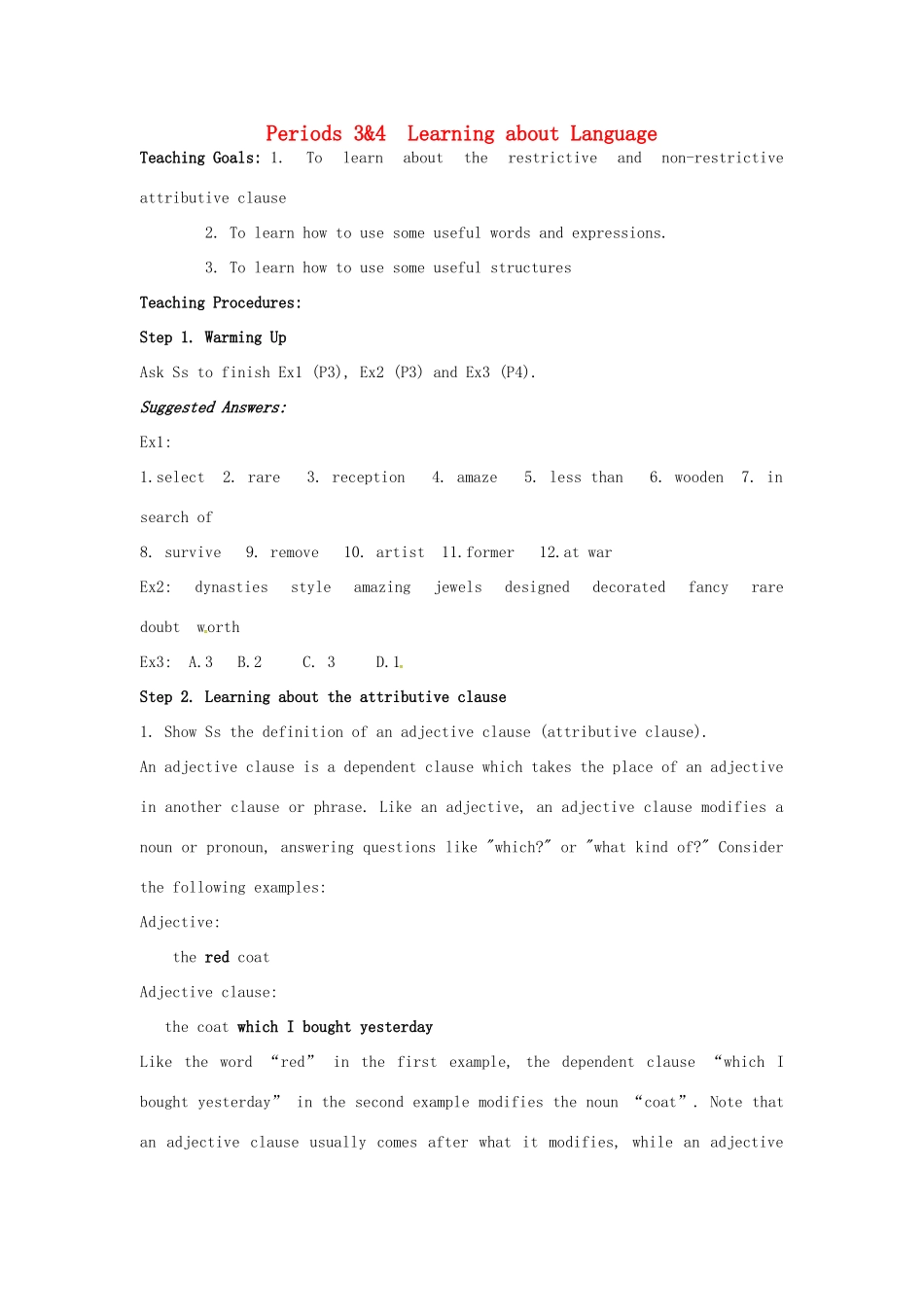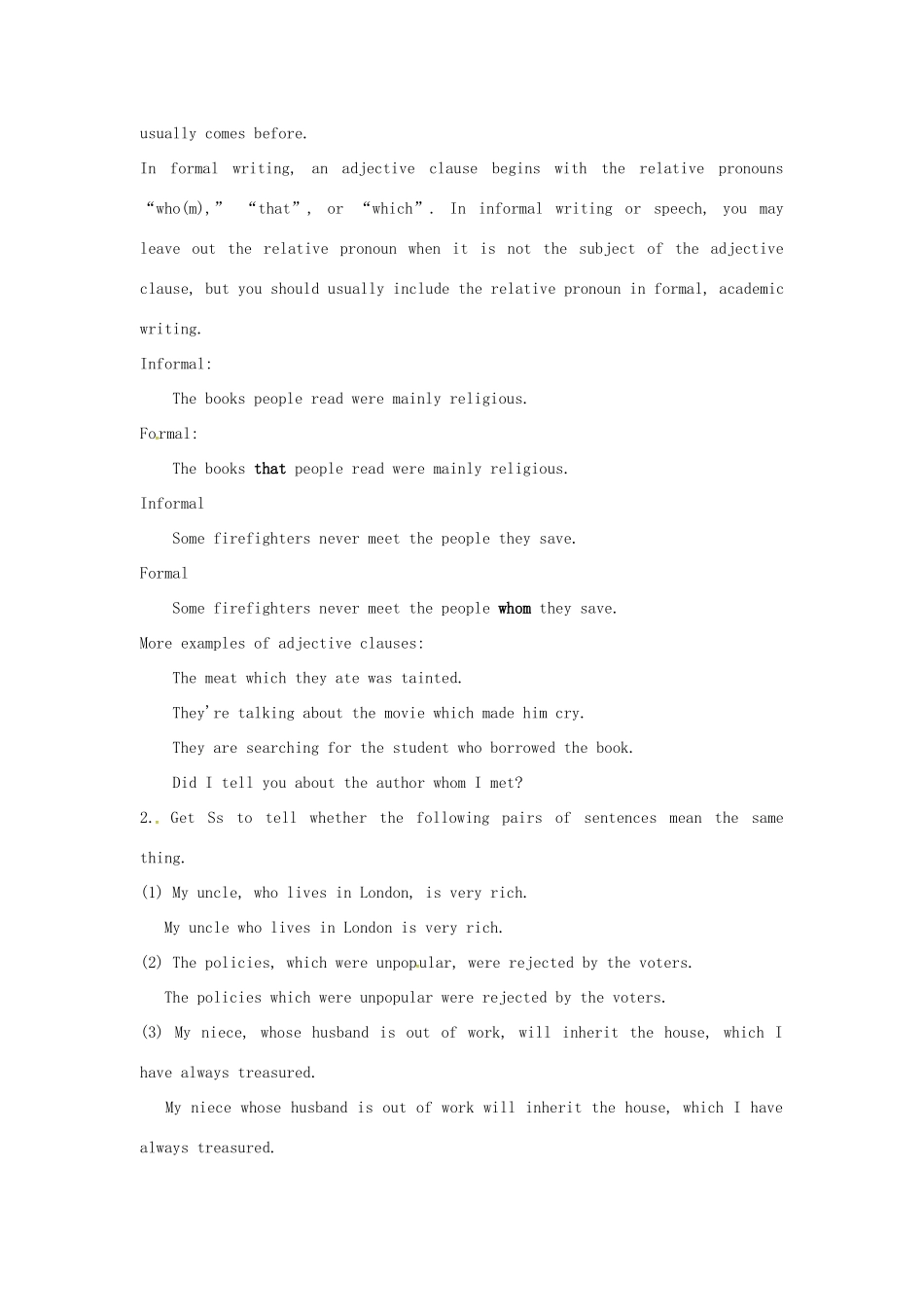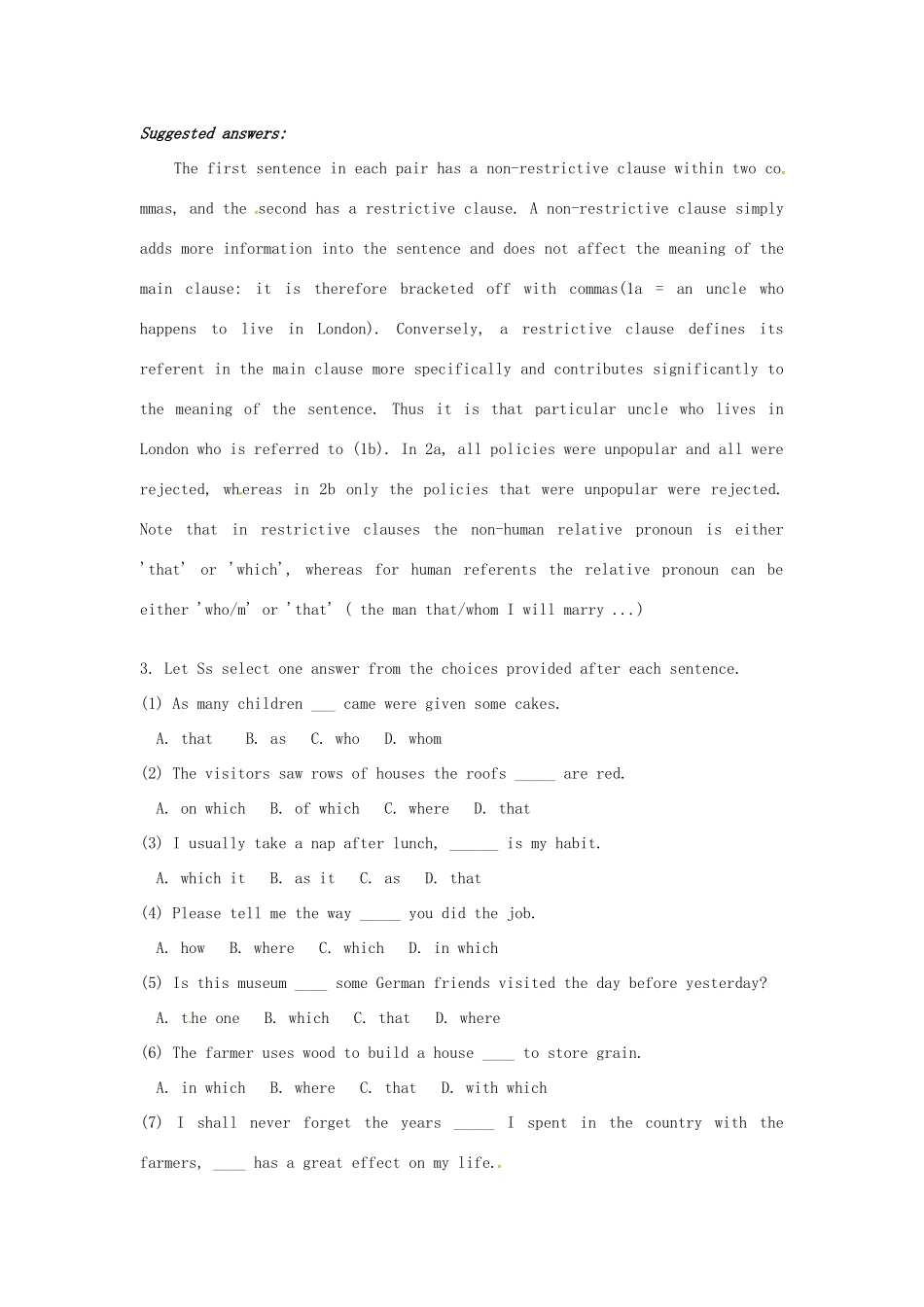Periods 3&4 Learning about LanguageTeaching Goals: 1. To learn about the restrictive and non-restrictive attributive clause2. To learn how to use some useful words and expressions.3. To learn how to use some useful structuresTeaching Procedures:Step 1. Warming UpAsk Ss to finish Ex1 (P3), Ex2 (P3) and Ex3 (P4). Suggested Answers: Ex1:1.select 2. rare 3. reception 4. amaze 5. less than 6. wooden 7. in search of8. survive 9. remove 10. artist 11.former 12.at warEx2: dynasties style amazing jewels designed decorated fancy rare doubt worthEx3: A.3 B.2 C. 3 D.1Step 2. Learning about the attributive clause1. Show Ss the definition of an adjective clause (attributive clause).An adjective clause is a dependent clause which takes the place of an adjective in another clause or phrase. Like an adjective, an adjective clause modifies a noun or pronoun, answering questions like "which?" or "what kind of?" Consider the following examples:Adjective: the red coatAdjective clause: the coat which I bought yesterdayLike the word “red” in the first example, the dependent clause “which I bought yesterday” in the second example modifies the noun “coat”. Note that an adjective clause usually comes after what it modifies, while an adjective usually comes before.In formal writing, an adjective clause begins with the relative pronouns “who(m),” “that”, or “which”. In informal writing or speech, you may leave out the relative pronoun when it is not the subject of the adjective clause, but you should usually include the relative pronoun in formal, academic writing.Informal: The books people read were mainly religious.Formal: The books that people read were mainly religious.Informal Some firefighters never meet the people...


